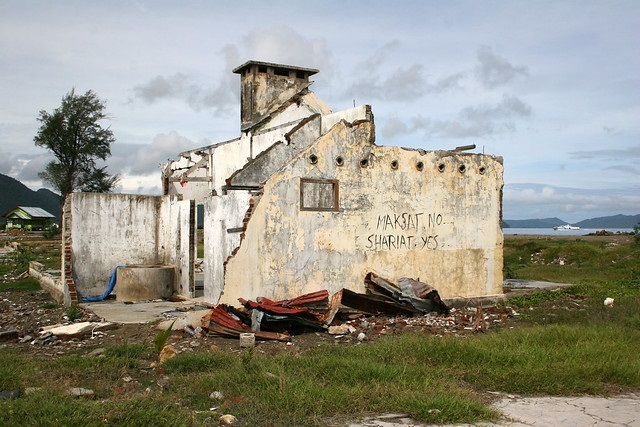Gerry van Klinken
Nearly a quarter of a million people have been killed by natural disasters in Indonesia since 1900. Compare that to 44,000 in the United States, which has a much larger population. Today, the UN estimates that death rates from natural disasters are four times higher in low- and middle-income countries like Indonesia than in wealthy countries like Australia or the US. The reason is not that natural hazards occur more often there. According to the Emdat global database of disasters (www.emdat.be), the US had over 1000 disasters since 1900, while Indonesia had 473. But people in developing countries are more vulnerable to disaster. Poverty forces them to live in flood-prone areas, for example. Also, governments are less able to protect their citizens. 'Global disaster risk is highly concentrated in poorer countries with weaker governance,' said the United Nations’ 2009 Global Assessment Report on Disaster Risk Reduction.
This edition of Inside Indonesia gets behind the statistics and the expert reports to ask: how do ordinary Indonesians experience natural disasters?
Indonesia certainly does experience a lot of them. Ron Witton reviews a stack of books on the country´s volcanoes. He discovers that the biggest explosions in history all took place on these islands. Some volcanic bangs changed weather around the world for years.
Of the next four articles, two discuss the 'culture' of disaster in Indonesia. Jarrah Sastrawan reads old Javanese and Balinese manuscripts where they describe earthquakes, tsunamis, and volcanic eruptions. He finds that a disaster there is not necessarily a disaster. They are 'ambivalent events,' he writes. 'They are certainly destructive, but they sometimes foretell good things to come.' God, or the Gods, speak through them. A mystical, religious feeling around disasters is still common today. David Kloos and Annemarie Samuels speak with survivors in Aceh of the 2004 tsunami that killed most of their neighbours. Years later, the fear remains real. So does the feeling that the tsunami must have had some kind of deeper purpose. Life is fragile. Natural forces cannot be tamed. Such is the culture of disaster in Indonesia.
The next two discuss people´s action amid a disaster. Muhammad Nasrum describes how people reacted to the horror of the earthquake and tsunami that struck the city of Palu in Central Sulawesi in September last year, killing over 4,000. Amid the chaos, government agencies built temporary shelters but could not supply them with electricity; citizens apportioned blame while paranoically swapping fake news on their phones. More action occurs in Roanne van Voorst´s piece about how slum-dwellers on the banks of a Jakarta river cope with frequent floods. In an extract from her lively book she describes, 'The men with the walkie talkies.… They know even the smallest details. They are a sort of flood soothsayer.' The government will not protect slumdwellers because they are illegal. So the men with the walkie-talkies cultivate 'friends' in upstream government offices that control the flood gates.
As climate change begins to bite, it will become more important to understand how vulnerable populations react to and are affected by disasters, and how governments can better assist them. This edition is a small step towards that goal.
Gerry van Klinken (klinken@kitlv.nl) recently retired from the Royal Netherlands Institute of Southeast Asian and Caribbean Studies (KITLV). He divides his time between the University of Amsterdam and the University of Queensland.
